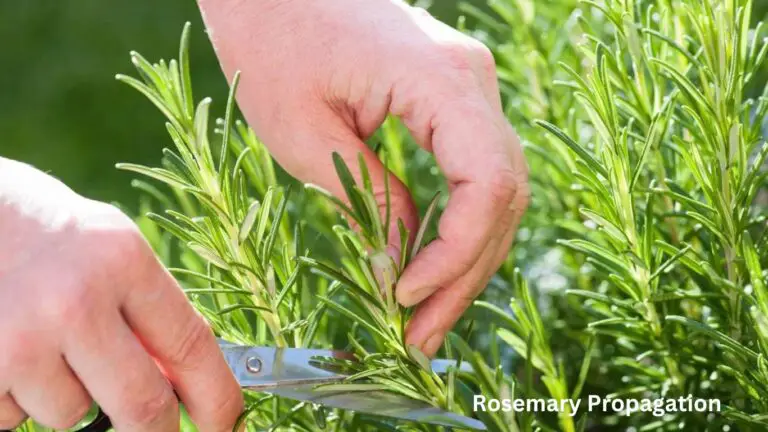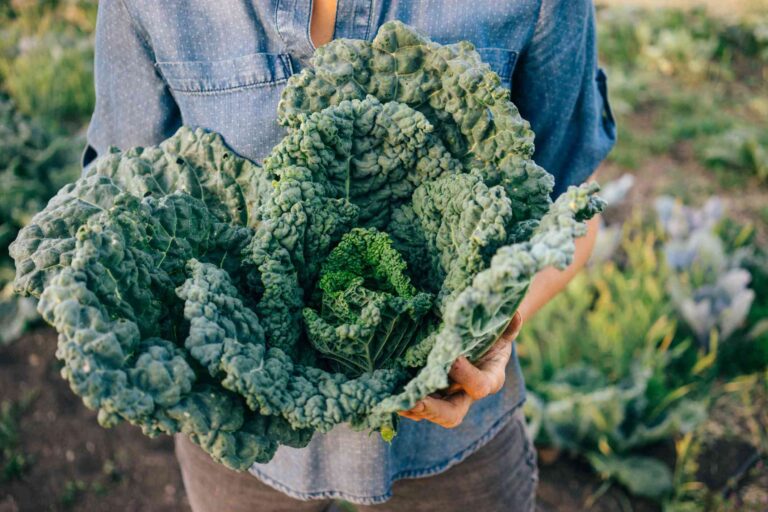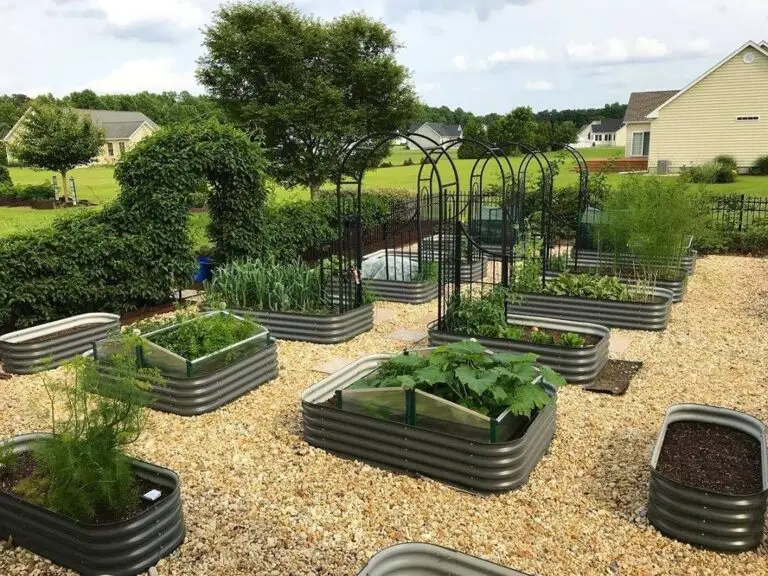How to Amend Soil: A Guide to Enhancing Your Soil Quality and Fertility for Your Plants
Table of Contents
Understanding Soil Composition: Exploring the Basics of Soil Structure and Components
Soil composition is a fundamental aspect of understanding the basics of soil structure and components. The composition of soil refers to the arrangement and the relative proportions of the different substances that make up the soil. These include minerals, organic matter, water, and air.
Minerals form the inorganic portion of soil and are derived from the breakdown of rocks and minerals over time. These minerals provide essential nutrients that plants need for growth and development. Organic matter, on the other hand, includes dead plant and animal materials that have decomposed over time. It serves as a source of nutrients and plays a critical role in soil fertility and microbial activity.

In addition to minerals and organic matter, soil also contains varying amounts of water and air. Water in soil is essential for plant uptake and is stored in the soil pores between the solid particles. Adequate aeration, which is the presence of air in the soil, is necessary for the respiration of plant roots and soil microorganisms. Understanding the composition of soil is vital for gardeners and growers as it influences its fertility, drainage, and overall health.
Assessing Your Soil: Conducting Soil Tests and Analyzing Nutrient Levels
Soil testing is an essential step toward understanding the quality and nutrient levels of your soil. Conducting regular soil tests enables gardeners to make informed decisions about the type and quantity of fertilizers or amendments needed to optimize plant growth. By analyzing the nutrient levels, pH balance, and other key factors, you can tailor your soil management practices to suit the specific needs of your plants and address any deficiencies that may be hindering their growth.
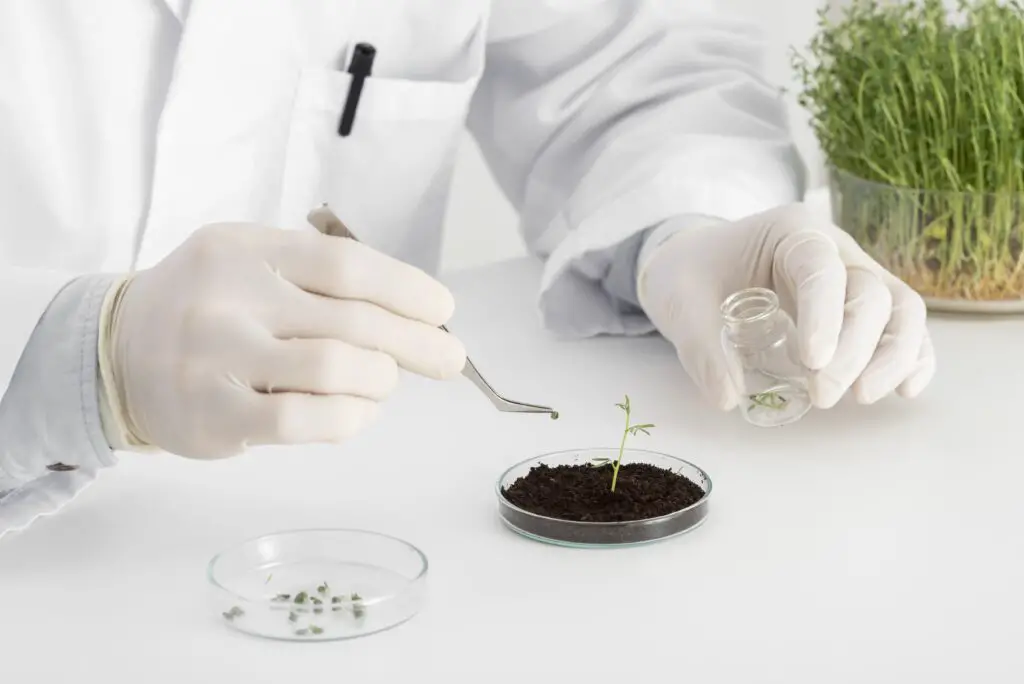
Table
| Step | Description |
|---|---|
| 1 | Collect soil samples from different areas of your garden or farm. |
| 2 | Send the soil samples to a soil testing laboratory for analysis. |
| 3 | The laboratory will conduct tests to determine the nutrient levels in the soil. |
| 4 | The laboratory will provide you with a soil test report that includes the nutrient levels and recommendations for lime and fertilizer application. |
| 5 | Use the recommendations provided in the soil test report to make informed decisions about soil management. |
When it comes to conducting soil tests, there are several methods available. One popular approach is to send a soil sample to a reputable laboratory for analysis. These laboratories use specialized equipment and techniques to measure the levels of various essential nutrients like nitrogen, phosphorus, potassium, and micronutrients. They also assess the soil’s pH level, organic matter content, and texture, providing you with a comprehensive report that serves as a foundation for informed decision-making. Additionally, there are also home testing kits available that allow you to conduct basic soil tests at your convenience. While these kits may not provide the same level of accuracy and detailed analysis as a professional laboratory, they can still offer valuable insights into the overall nutrient composition of your soil.
By investing time and effort into conducting soil tests and analyzing nutrient levels, gardeners can gain a deeper understanding of their soil’s properties and make informed decisions about how to improve its fertility. Whether you choose professional lab analysis or utilize a home testing kit, the information gleaned from these tests can guide you in selecting appropriate fertilizers and amendments, optimizing pH levels, and ultimately creating an ideal growing environment for your plants. So, take the first step towards assessing your soil, and unlock the potential for healthier and more abundant gardens.
Identifying Soil Deficiencies: Recognizing Signs of Nutrient Imbalances and Deficiencies in Plants
Nutrient imbalances and deficiencies in plants can have detrimental effects on their overall health and productivity. As a gardener or plant enthusiast, it is crucial to be able to identify the signs of these deficiencies and take appropriate measures to rectify them. One common indicator of nutrient imbalance is the appearance of yellowing or discolored leaves. This may be an indication of a deficiency in essential nutrients such as nitrogen, magnesium, or iron. Additionally, stunted or slow growth, along with poor fruit or flower production, can also point to nutrient deficiencies in the soil. By closely observing these signs and symptoms, you can determine which nutrients your plants may be lacking and make informed decisions about the necessary amendments.
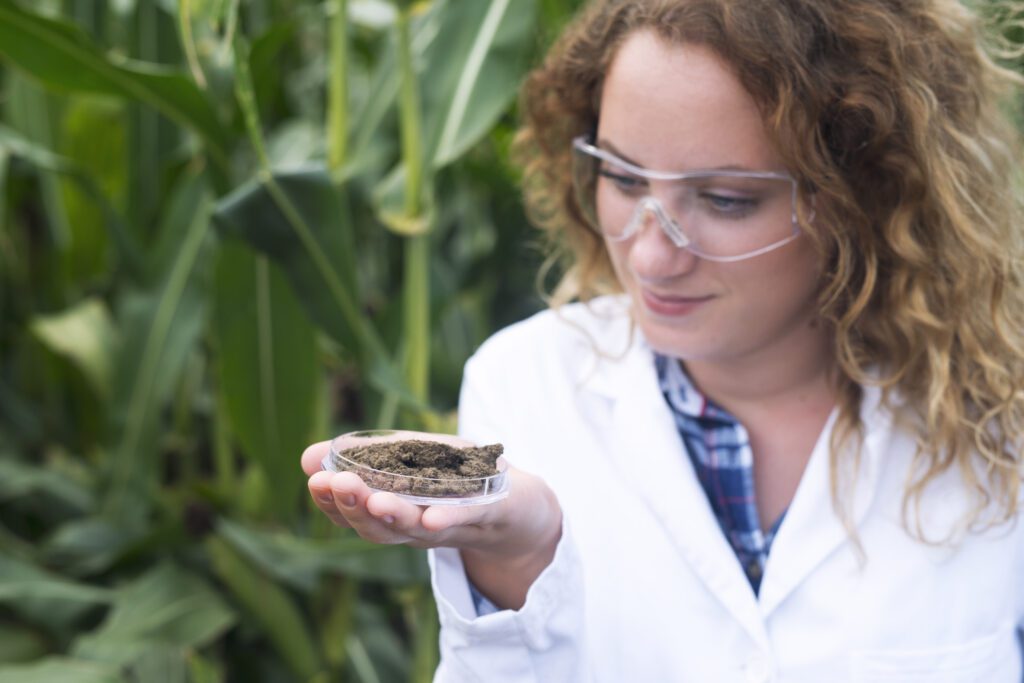
To better understand the specific nutrient deficiencies, it is important to familiarize yourself with the symptoms associated with each. For instance, a nitrogen deficiency often manifests as pale or yellowed leaves starting from the bottom of the plant, and eventually progressing upward. Phosphorus deficiency, on the other hand, may result in the plants developing purplish or reddish hues in their leaves. Other deficiencies, such as those of potassium, magnesium, or iron, can cause chlorosis (yellowing of leaves), stunted growth, or the appearance of necrotic spots. Taking note of these symptoms and comparing them to reference charts or resources can help you accurately identify the nutrient issues your plants may be facing. Correct identification of specific nutrient deficiencies is crucial in determining the appropriate course of action, be it through soil amendments, fertilizers, or other related practices.
Organic Matter: Harnessing the Power of Compost and Organic Amendments for Soil Enrichment
Organic matter is a vital component of healthy soil, playing a crucial role in soil enrichment and plant growth. Compost, in particular, is a powerful organic amendment that can greatly improve soil quality. Compost is created through the decomposition of organic materials such as kitchen scraps, yard waste, and other plant matter. As these materials break down, they release essential nutrients and beneficial microorganisms into the soil.

The addition of compost to the soil provides numerous benefits. First and foremost, compost enriches the soil with essential nutrients, including nitrogen, phosphorus, and potassium, as well as micronutrients like calcium and magnesium. These nutrients are crucial for the healthy development of plants, promoting root growth, flowering, and fruit production. Additionally, compost improves soil structure, enhancing its ability to retain moisture and drain excess water. This is especially beneficial in regions prone to drought or heavy rainfall, as it helps alleviate water stress for plants. Furthermore, the organic matter in compost acts as a food source for beneficial soil organisms, such as earthworms and bacteria, which play a vital role in breaking down organic matter further and releasing nutrients for plant absorption. Overall, incorporating compost into the soil is a sustainable and effective way to nourish plants and improve the overall health of the soil.
Nurturing Microbial Life: Promoting Healthy Soil Biology for Enhanced Plant Growth
Microorganisms play a crucial role in creating a healthy and thriving soil ecosystem. These microscopic creatures, including bacteria, fungi, and protozoa, contribute to the decomposition of organic matter, nutrient cycling, and disease suppression. Nurturing microbial life is essential for promoting healthy soil biology and enhancing plant growth.
One way to support microbial activity in the soil is by adding organic matter, such as compost or manure. These materials provide food and energy sources for microorganisms, stimulating their growth and activity. Incorporating organic matter into the soil also improves its structure, moisture-holding capacity, and nutrient content, further enhancing the conditions for microbial life.
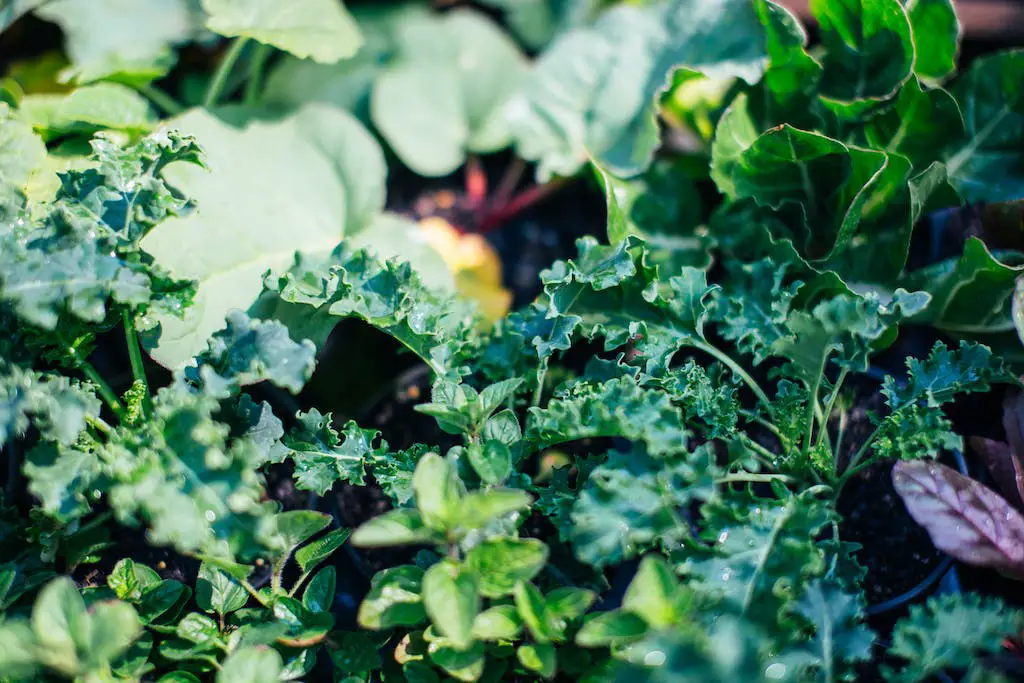
In addition to organic matter, ensuring proper soil moisture and aeration is crucial for microbial activity. Microorganisms require moisture to thrive, but excess water can create anaerobic conditions detrimental to their survival. Adequate soil drainage and regular aeration help maintain a balance between moisture and oxygen levels, supporting a diverse and active microbial community.
Promoting healthy soil biology through the nurturing of microbial life is a key aspect of sustainable gardening practices. By understanding the importance of these tiny organisms, gardeners can create an environment that fosters their growth and activity, leading to enhanced plant growth and overall soil health.
Proper pH Balance: Adjusting Soil Acidity or Alkalinity to Optimize Nutrient Availability
Maintaining the proper pH balance in the soil is crucial for optimizing nutrient availability and supporting healthy plant growth. Soil pH refers to the level of acidity or alkalinity in the soil, and it directly affects the ability of plants to absorb essential nutrients. Different plant species have varying pH preferences, and understanding and adjusting soil pH accordingly can significantly enhance the overall health and productivity of your garden.
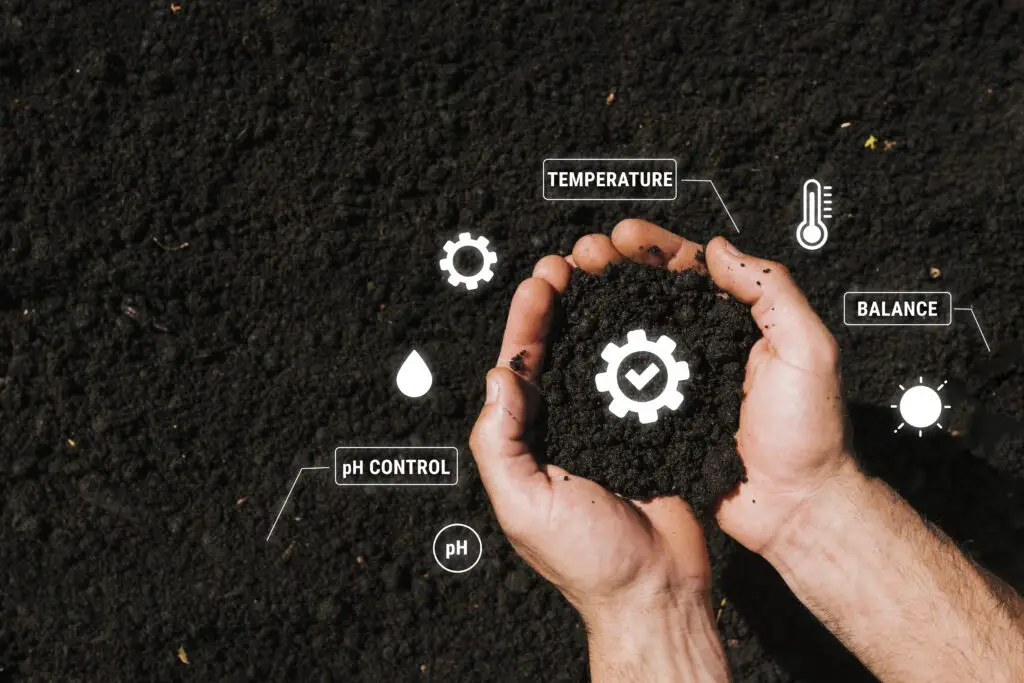
Acidic soil, with a pH below 7, hinders the availability of certain nutrients, such as nitrogen, phosphorus, and potassium. On the other hand, alkaline soil, with a pH above 7, can limit the accessibility of micronutrients like iron, manganese, and zinc. By testing your soil’s pH and making necessary adjustments, you can create an optimal environment where plants can easily access the nutrients they need for robust growth.
Essential Nutrients: Meeting the Nutritional Needs of Your Plants through Fertilizers and Amendments
Essential nutrients are crucial for meeting the nutritional needs of plants and ensuring their healthy growth and development. These nutrients, which include macronutrients and micronutrients, play a key role in various physiological processes and are necessary for the production of essential enzymes, proteins, and other vital compounds. While some nutrients are naturally present in the soil, others may need to be supplemented through fertilizers and amendments to maintain optimal nutrient levels.
Macronutrients, such as nitrogen, phosphorus, and potassium, are required by plants in large quantities and play a major role in their overall growth. Nitrogen helps stimulate green leafy growth and is essential for the production of proteins, while phosphorus promotes root development and flower formation. Potassium, on the other hand, enhances overall plant health, influences disease resistance, and aids in water and nutrient transportation within plants.

In addition to macronutrients, plants also require micronutrients, albeit in smaller quantities, for their proper growth and development. Micronutrients, including iron, manganese, zinc, and others, are involved in various biochemical processes that support plant health and vitality. These nutrients are typically provided in trace amounts through soil amendments, such as compost or organic matter, as well as through targeted application of micronutrient fertilizers.
To ensure that your plants receive the necessary nutrients, it is important to conduct soil tests and analyze nutrient levels. Soil tests can help identify any deficiencies or imbalances in nutrient availability and guide the selection and application of appropriate fertilizers and amendments. By understanding the nutritional needs of your plants and providing them with the essential nutrients they require, you can promote healthy growth, maximize yields, and enhance the overall success of your gardening endeavors.
Mulching Techniques: Utilizing Mulch for Moisture Retention and Weed Suppression
Mulching is a valuable technique in gardening that offers numerous benefits, such as moisture retention and weed suppression. By applying a layer of organic or inorganic material to the soil surface, gardeners can create a protective barrier that helps plants conserve moisture and reduces water evaporation. This is particularly beneficial in hot and dry climates or during periods of drought, where water conservation is crucial for plant health and survival.
Mulch also plays a significant role in weed suppression. By covering the soil with a thick layer of mulch, weed seeds are deprived of the light they need to germinate and grow. This helps to greatly reduce weed competition, allowing plants to receive the necessary nutrients, water, and sunlight without the interference of unwanted vegetation. In addition, mulch acts as a physical barrier, making it more challenging for weeds to penetrate the soil surface. This results in less time and effort spent on manual weeding or the use of chemical herbicides.
Overall, mulching techniques provide gardeners with practical and sustainable solutions for moisture conservation and weed control. By adopting this practice, gardeners can create a healthier and more productive garden environment while minimizing the use of water and harmful chemicals. Whether using organic materials such as straw, wood chips, or compost or opting for inorganic options like gravel or landscape fabric, choosing the right mulch and applying it correctly can greatly enhance the success and enjoyment of any garden.
• Mulching helps with moisture retention by creating a protective barrier that reduces water evaporation.
• This is particularly beneficial in hot and dry climates or during periods of drought.
• Mulch also plays a significant role in weed suppression by depriving weed seeds of the light they need to germinate and grow.
• It acts as a physical barrier, making it more challenging for weeds to penetrate the soil surface.
• Less time and effort spent on manual weeding or the use of chemical herbicides.
• Mulching techniques provide practical and sustainable solutions for moisture conservation and weed control.
• Gardeners can create a healthier and more productive garden environment while minimizing water usage and harmful chemicals.
• Organic materials such as straw, wood chips, or compost can be used as mulch options.
• Inorganic options like gravel or landscape fabric are also available.
• Choosing the right mulch and applying it correctly greatly enhances garden success.
Effective Watering Practices: Ensuring Proper Irrigation for Healthy Plant and Soil Relationships
Proper watering practices are essential for maintaining healthy plant and soil relationships in your garden. Water is a vital resource that plants rely on to facilitate various physiological processes, including nutrient absorption, photosynthesis, and transpiration. By providing the right amount of water at the right time, you can promote optimal growth, prevent dehydration or overhydration, and ensure the overall health of your plants.
One important aspect of effective watering is understanding the specific water requirements of different plant species. Some plants prefer moist soil while others thrive in drier conditions. It is important to research and understand the water needs of each plant in your garden to avoid under or overwatering. Additionally, factors such as soil type, climate, and weather patterns can influence the watering frequency and duration. Monitoring the moisture levels in the soil using a soil moisture meter or conducting a simple finger test can help you determine the appropriate watering schedule for your plants. Remember, consistency is key, as erratic watering practices can lead to stress and negatively impact plant health.
Another crucial consideration for proper irrigation is the method of watering. The choice between overhead watering, drip irrigation, or soaker hoses depends on factors like plant types, watering efficiency, and water conservation. Overhead watering, such as using sprinklers, is suitable for larger areas but can lead to water wastage through evaporation. Drip irrigation and soaker hoses, on the other hand, deliver water directly to the root zone, minimizing water loss and promoting deep root growth. Consider the needs of your plants, water efficiency, and the overall water management strategy of your garden when selecting the appropriate watering method.
By adhering to effective watering practices, you ensure that your plants receive the necessary moisture for growth and development while promoting a healthy soil ecosystem. Remember, the goal is to establish a balance between providing enough water for plant needs and preventing waterlogging or excessive drying out of the soil. With proper irrigation techniques and attention to plant and soil requirements, you can create an optimal environment for your garden to flourish.
Soil Aeration: Enhancing Oxygen Circulation for Improved Root Development and Overall Soil Health
Soil aeration plays a crucial role in maintaining the health and vitality of plants. By enhancing oxygen circulation within the soil, root development is improved, resulting in overall soil health. Oxygen is essential for the respiration process in plants, and when the soil is compacted or lacks proper aeration, roots struggle to access this vital element.
When soils are poorly aerated, the lack of oxygen can lead to anaerobic conditions, causing root rot and other diseases that can severely damage plants. Additionally, compacted soil limits the movement of water, nutrients, and beneficial organisms, further hindering plant growth. By implementing soil aeration practices, such as tilling, aerating tools, or the inclusion of organic matter, gardeners can create an environment where roots can thrive and effectively uptake the necessary nutrients for healthy growth.
Managing Soil Erosion: Preventing Soil Loss and Maintaining Soil Structure
Soil erosion is a common problem that can have detrimental effects on agricultural productivity and the overall health of the soil. It occurs when the top layer of soil is washed or blown away, leaving behind a barren surface that is less able to support plant growth. Fortunately, several proactive measures can be taken to prevent soil loss and maintain soil structure.
One effective method to manage soil erosion is the implementation of contour plowing. This technique involves plowing parallel to the contour lines of the land, creating ridges and furrows that help to slow down the flow of surface water. By breaking up the surface of the soil, contour plowing reduces the risk of water runoff and allows for better water infiltration. This not only helps to prevent erosion but also improves the soil’s ability to retain moisture, promoting healthy plant growth. Additionally, the use of cover crops can significantly reduce soil erosion. Planting a cover crop, such as legumes or grasses, during periods when the main crop is not in season provides a protective layer on the soil surface. The cover crop’s dense root system helps to stabilize the soil, preventing it from being washed away. Cover crops also add organic matter to the soil when they are eventually incorporated, further enhancing soil fertility and structure. So, incorporating these practices into agricultural land management can play a crucial role in preventing soil erosion and maintaining the health and productivity of the soil.
Crop Rotation and Cover Crops: Utilizing Plant Diversity to Enhance Soil Fertility and Prevent Disease
Crop rotation and cover crops are crucial practices for gardeners and farmers alike, as they offer numerous benefits in enhancing soil fertility and preventing disease. By utilizing plant diversity, these techniques help break pest and disease cycles, reduce soil erosion, and improve nutrient availability.
Crop rotation involves systematically changing the types of crops grown in a specific area over time. This practice prevents the build-up of pests and diseases that target specific plant species. In addition, different crops have varying nutritional requirements, and by rotating crops, ensures a balanced uptake and utilization of nutrients from the soil. This results in improved soil fertility and overall plant health.
Cover crops, also known as green manure crops, are grown specifically to improve soil structure and fertility during periods of fallow or between main crops. These cover crops act as natural mulch, protecting the soil from erosion and reducing weed growth. They also help break up compacted soil, enhance water infiltration, and increase organic matter content. Legume cover crops, such as clover or alfalfa, have the added benefit of fixing atmospheric nitrogen into the soil through their symbiotic relationship with nitrogen-fixing bacteria. This replenishes nutrient levels and reduces the need for synthetic fertilizers.
Implementing crop rotation and cover crops is a sustainable and effective way to enhance soil health and productivity. By strategically selecting plant species and adopting diverse management practices, gardeners and farmers can create an optimal environment for plant growth while minimizing the risk of diseases and pests. Embracing these techniques not only benefits the current crop but also sets the foundation for long-term, sustainable soil management.
Sustainable Soil Management: Implementing Long-Term
Implementing sustainable soil management practices is crucial for maintaining the long-term health and fertility of your garden soil. By adopting these practices, you can optimize nutrient availability, enhance soil structure, and reduce environmental impact. One key aspect of sustainable soil management is the use of organic amendments, such as compost and manure. These materials are rich in organic matter, which improves soil structure and promotes the growth of beneficial microorganisms. Incorporating compost into the soil adds essential nutrients, enhances water-holding capacity, and increases the soil’s ability to support plant growth. Moreover, organic amendments help reduce the need for chemical fertilizers, minimizing the risk of nutrient runoff and groundwater contamination.
In addition to organic amendments, crop rotation is another important technique to implement for long-term soil management. By systematically rotating crops, you can prevent the buildup of pests, diseases, and nutrient deficiencies. Different plants have different nutrient requirements and interactions with soil microorganisms. Through crop rotation, you can tap into this natural diversity and promote a healthier soil environment. Furthermore, cover crops can be integrated into the rotation schedule. Cover crops, such as legumes or grasses, add organic matter, fix nitrogen, and prevent soil erosion. By incorporating these practices into your gardening routine, you can ensure the long-term sustainability and productivity of your soil.
Why is understanding soil composition important for sustainable soil management?
Understanding soil composition is crucial because it helps determine the soil’s fertility, drainage capabilities, and nutrient-holding capacity. This knowledge allows farmers and gardeners to make informed decisions about soil amendments and management practices to optimize plant growth and minimize environmental impact.
How can I assess my soil to ensure its health?
Conducting soil tests is the best way to assess soil health. These tests analyze key soil properties like pH levels, nutrient content, organic matter percentage, and soil texture. By understanding these factors, you can identify any deficiencies or imbalances and take appropriate measures to improve soil conditions.
What are some signs of nutrient imbalances or deficiencies in plants?
Nutrient imbalances or deficiencies in plants can manifest in various ways. Some common signs include yellowing or browning of leaves, stunted growth, poor fruit development, and increased susceptibility to pests and diseases. Regular observation and analysis of plant health can help identify these issues and guide the application of necessary amendments.
How can I enrich my soil using organic matter?
Compost and organic amendments are excellent sources of organic matter for enriching soil. Compost can be made from kitchen scraps, yard waste, and other organic materials. Adding these to the soil improves its structure, enhances water retention, and promotes the growth of beneficial microorganisms.
Why is healthy soil biology important for plant growth?
Healthy soil biology is essential for plant growth because it supports nutrient cycling, improves soil structure, and suppresses harmful pathogens. Beneficial microorganisms like bacteria, fungi, and earthworms break down organic matter, making nutrients more available to plants. Promoting soil biology through proper organic matter management can enhance plant growth and overall soil health.
How can I adjust the pH balance of my soil?
To adjust soil pH, you can add amendments such as lime to raise pH levels or elemental sulfur to lower them. The ideal pH range for most plants is slightly acidic to neutral (around 6 to 7). Adjusting pH ensures optimal nutrient availability to plants and prevents nutrient deficiencies or toxicities.
What role do fertilizers and amendments play in meeting plant nutritional needs?
Fertilizers and amendments provide essential nutrients that may be lacking in the soil. They help meet the nutritional needs of plants, promote healthy growth, and increase yields. However, it is important to use them judiciously and based on soil test results to prevent over-application, which can have negative environmental consequences.
How can mulching benefit soil health?
Mulching helps retain soil moisture, regulates soil temperature, suppresses weed growth, and improves soil structure. Organic mulches like straw, wood chips, or compost provide a protective layer on top of the soil, preventing water evaporation and erosion. As the mulch breaks down, it adds organic matter to the soil, enhancing its fertility.
What are some effective watering practices for healthy plant and soil relationships?
Effective watering practices involve watering deeply and infrequently to encourage deep root growth. This helps plants access water from lower soil layers and promotes soil aeration. It is best to water early in the morning to minimize evaporation and fungal diseases. Adjusting watering frequency based on weather conditions and plant needs is also important.
How can soil aeration improve root development and overall soil health?
Soil aeration involves improving the circulation of oxygen in the soil. This helps roots access oxygen, which is essential for their growth and overall plant health. Aeration also promotes beneficial soil organisms and enhances nutrient uptake. Techniques like tilling, aerating equipment, or incorporating organic matter can aid in soil aeration.
What are some effective methods to prevent soil erosion?
To prevent soil erosion, you can implement practices like contour plowing, terracing, or creating windbreaks. These techniques help slow down water flow and prevent wind from carrying away soil particles. Additionally, maintaining ground cover through vegetation or mulching can reduce the impact of raindrops and stabilize the soil.
How can crop rotation and cover crops enhance soil fertility and prevent disease?
Crop rotation involves alternating the type of crops grown in a particular area over time. This practice helps prevent the build-up of pests and diseases specific to certain crops, improves soil fertility by balancing nutrient demands, and enhances soil structure. Intercropping with cover crops like legumes can also fix nitrogen in the soil, further enriching it and suppressing weeds.

Kanike Sreekanth, a prolific writer at SouthElMonteHydroponics, brings a unique blend of creativity and scientific rigor to the table. With a degree in Horticulture from a prestigious institution, Kanike’s expertise spans hydroponic farming, plant biology, and agricultural sustainability. Their passion for exploring innovative cultivation methods and promoting environmental stewardship drives them to uncover new insights in the realm of hydroponics. Kanike’s writing serves as a conduit for sharing their knowledge and inspiring others to embrace alternative farming practices for a more sustainable future.


